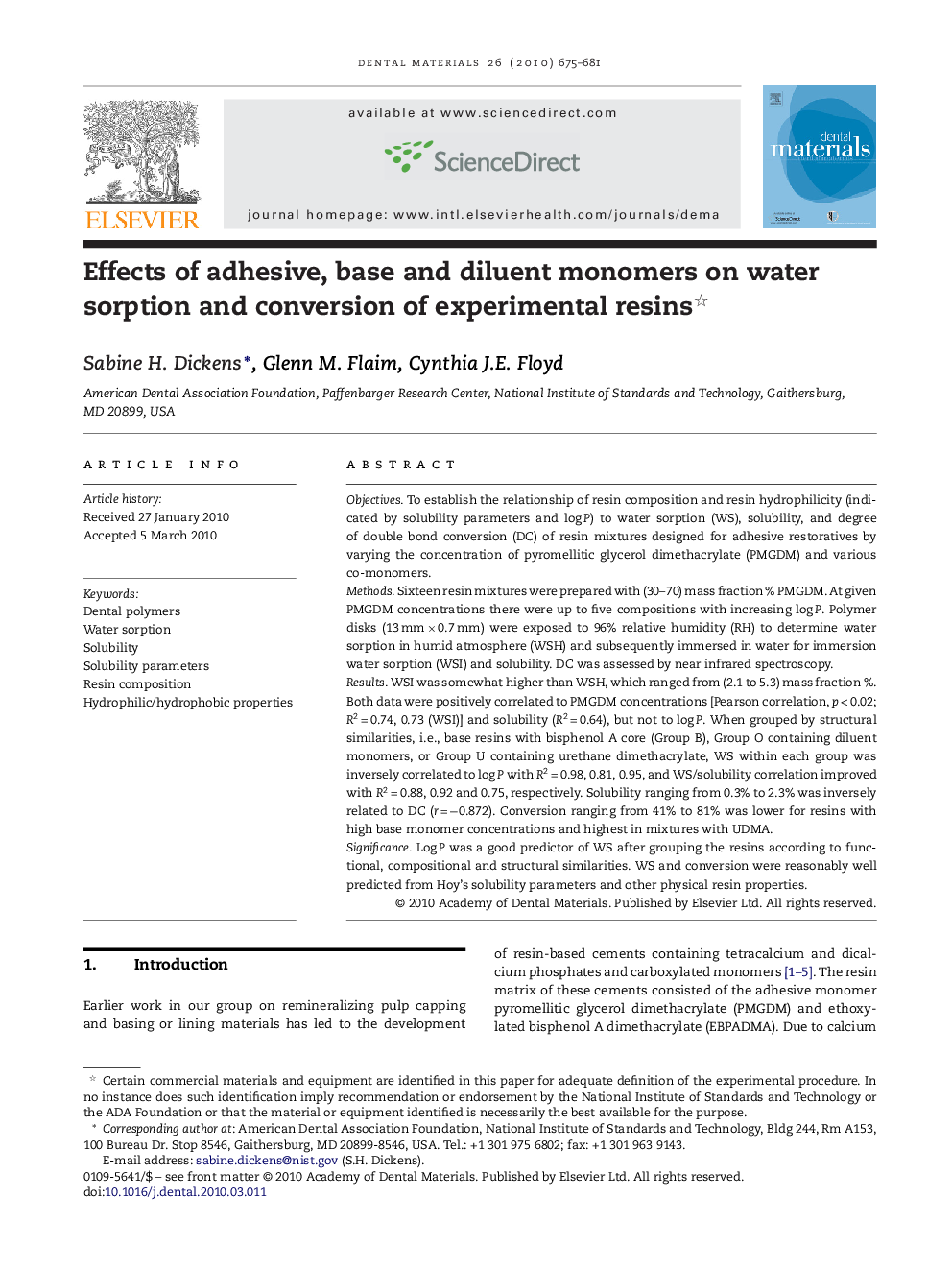| Article ID | Journal | Published Year | Pages | File Type |
|---|---|---|---|---|
| 1422723 | Dental Materials | 2010 | 7 Pages |
ObjectivesTo establish the relationship of resin composition and resin hydrophilicity (indicated by solubility parameters and log P) to water sorption (WS), solubility, and degree of double bond conversion (DC) of resin mixtures designed for adhesive restoratives by varying the concentration of pyromellitic glycerol dimethacrylate (PMGDM) and various co-monomers.MethodsSixteen resin mixtures were prepared with (30–70) mass fraction % PMGDM. At given PMGDM concentrations there were up to five compositions with increasing log P. Polymer disks (13 mm × 0.7 mm) were exposed to 96% relative humidity (RH) to determine water sorption in humid atmosphere (WSH) and subsequently immersed in water for immersion water sorption (WSI) and solubility. DC was assessed by near infrared spectroscopy.ResultsWSI was somewhat higher than WSH, which ranged from (2.1 to 5.3) mass fraction %. Both data were positively correlated to PMGDM concentrations [Pearson correlation, p < 0.02; R2 = 0.74, 0.73 (WSI)] and solubility (R2 = 0.64), but not to log P. When grouped by structural similarities, i.e., base resins with bisphenol A core (Group B), Group O containing diluent monomers, or Group U containing urethane dimethacrylate, WS within each group was inversely correlated to log P with R2 = 0.98, 0.81, 0.95, and WS/solubility correlation improved with R2 = 0.88, 0.92 and 0.75, respectively. Solubility ranging from 0.3% to 2.3% was inversely related to DC (r = −0.872). Conversion ranging from 41% to 81% was lower for resins with high base monomer concentrations and highest in mixtures with UDMA.SignificanceLog P was a good predictor of WS after grouping the resins according to functional, compositional and structural similarities. WS and conversion were reasonably well predicted from Hoy's solubility parameters and other physical resin properties.
